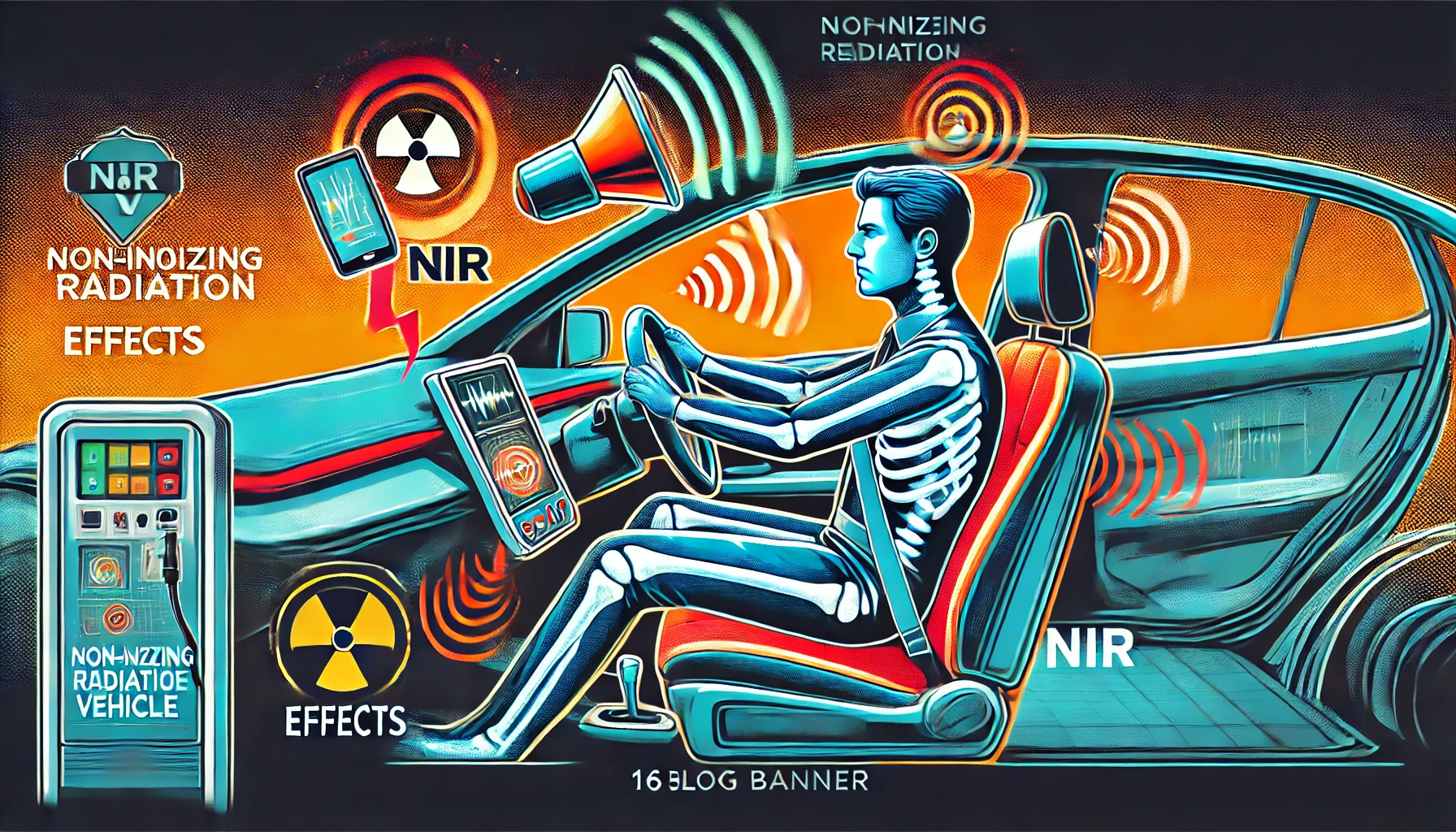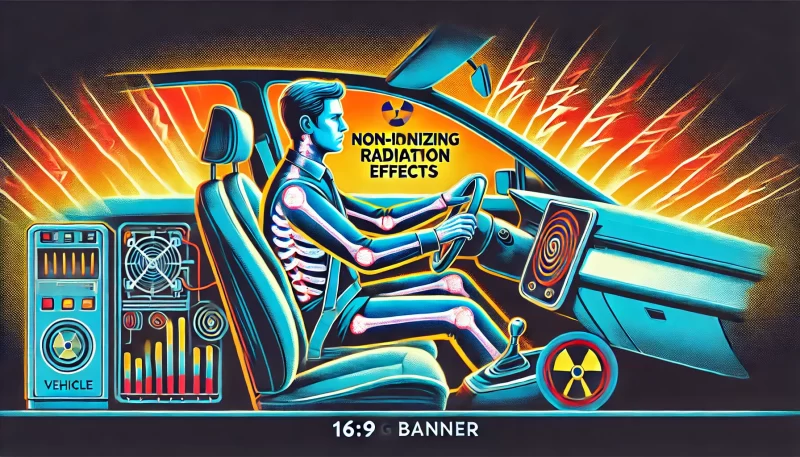
Electromagnetic Concerns and Consumer Choices: The Impact on Hybrid and Traditional Car Markets

Introduction As the automotive industry evolves with the increasing integration of hybrid electric vehicles (HEVs) and internal combustion engine (ICE) vehicles, consumer apprehensions about non-ionizing radiation (NIR) have emerged as a significant factor influencing purchasing decisions. This blog delves into how these concerns, paired with the lack of conclusive research and outdated regulatory standards, are shaping the economic landscape of the automotive sector.
Consumer Concerns and Economic Impact A recent study by Anat Tchetchik, Sigal Kaplan, and Orit Rotem-Mindali highlights a growing market hesitation due to NIR emissions from HEVs. This hesitation is primarily fueled by the potential long-term health impacts of electromagnetic fields generated by these vehicles. The study found that information about NIR levels is associated with a lower probability of choosing HEVs and a higher likelihood of opting for ICE vehicles. Such consumer behavior reflects a significant shift in market dynamics, where health concerns could override environmental benefits promised by HEVs.
The Need for Renewed Research The discontinuation of government-funded studies like those by the NTP in 2024 has left a void in ongoing research into the biological effects of NIR, just as these concerns are becoming more prominent in consumer minds. This lack of ongoing research undermines consumer confidence and hampers the ability of policymakers and manufacturers to address these concerns effectively. Restoring these research programs is not only crucial for public health but is also essential for providing the automotive industry with the data it needs to innovate safely and meet consumer expectations.
Regulatory Lag and Market Uncertainty The Federal Communications Commission (FCC) has not updated its guidelines on NIR in over two decades, a period during which the technology and its usage have evolved dramatically. This regulatory stagnation has resulted in guidelines that do not reflect current scientific understanding or technological advancements, adding another layer of uncertainty that affects consumer decisions and hinders market growth for newer technologies like HEVs.
Economic Consequences of Inaction The hesitation to adopt HEVs due to NIR concerns can have broader economic implications. First, it affects the automotive industry’s shift towards greener technologies, potentially slowing down progress on environmental goals. Second, it influences consumer spending, directing it away from potentially more sustainable options. Lastly, it impacts the secondary markets and infrastructure developments related to HEVs, such as charging stations and maintenance services.
Call to Action To mitigate these issues, there is an urgent need for:
- Reinstating Government-Funded Research: Renewing research efforts will fill knowledge gaps and provide definitive answers that could alleviate consumer concerns.
- Updating Regulatory Frameworks: Modernizing NIR guidelines will help align safety standards with current technologies, thus restoring consumer trust and facilitating the adoption of HEVs.
- Industry and Government Collaboration: Automotive manufacturers and government bodies need to collaborate more closely to ensure that vehicle designs and regulations address health concerns without compromising on environmental benefits.
The intersection of health concerns, technology adoption, and environmental impact presents a complex challenge for the automotive industry. Addressing this challenge requires a multifaceted approach that includes renewed research, updated regulations, and active engagement with consumer concerns. Only by acknowledging and addressing these NIR-related issues can the automotive industry hope to foster consumer trust and encourage the adoption of environmentally friendly vehicle technologies.
Consumer Distrust and Market Dynamics Consumer confidence is a cornerstone of healthy market dynamics. However, when it comes to products that may emit RF radiation, such as hybrid cars versus traditional gasoline cars, the lack of definitive safety assurances can lead to hesitancy. Studies, like the one from Bar Ilan University, have shown that non-ionizing radiation concerns can negatively affect the choice of hybrid electric vehicles (HEVs), suggesting that consumers are wary of potential health risks. This wariness not only impacts individual purchasing decisions but can also shift market trends and influence the strategic directions of entire industries.
The Economic Implications of Halting Research The decision in 2024 to discontinue the National Toxicology Program’s (NTP) research into the biological and environmental impacts of cell phone radiation came at a time when such studies were beginning to shape public and corporate policy. Without ongoing, government-funded research to provide clear guidance, industries are left navigating a landscape filled with uncertainties. This not only stymies innovation but also potentially leads to decreased investment in new technologies, such as HEVs, which consumers might otherwise consider unsafe.
The Role of Regulatory Bodies The outdated guidelines from the Federal Communications Commission (FCC) further compound the issue. Current regulations, established decades ago, fail to account for the latest scientific findings and the evolution of technology. This regulatory lag not only undermines consumer confidence but also affects international competitiveness, as other countries might adopt more current, research-backed regulations that better protect public health and the environment.
A Call for Renewed Research and Updated Regulations To mitigate these economic impacts, there is an urgent need to reinstate robust government-funded research initiatives like those previously conducted by the NTP. Such research would help clarify the health impacts of RF radiation, providing the data needed to inform sound regulatory updates. Moreover, these efforts would help restore consumer confidence, stabilize markets, and guide industries in developing safer and more innovative technologies.
Integrating Research Findings into Economic Strategy It is crucial that findings from renewed research are swiftly integrated into economic and regulatory strategies. This integration will ensure that consumer health is protected and that manufacturers have the clarity needed to innovate responsibly. Updating RF radiation safety standards could serve as a catalyst for growth in sectors like automotive technology, where consumer hesitancy based on health concerns is currently a significant barrier.







